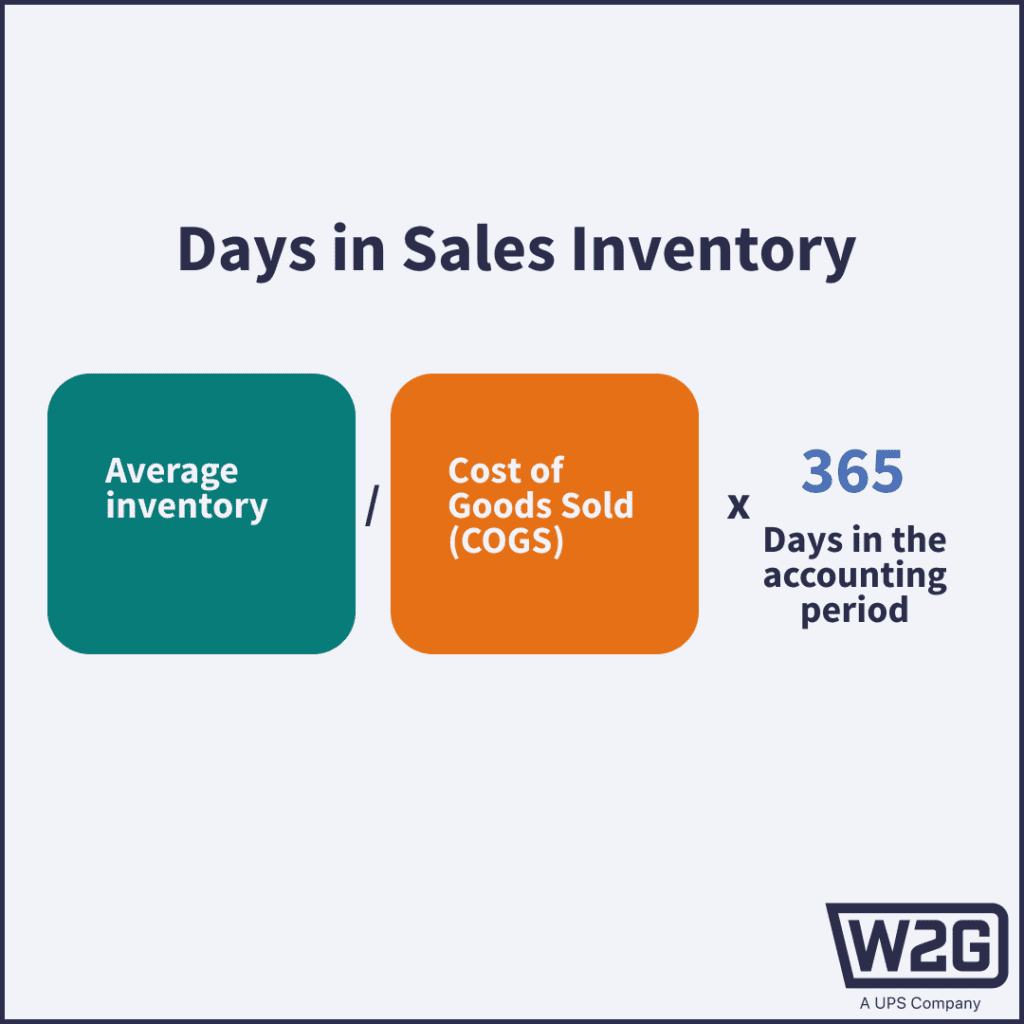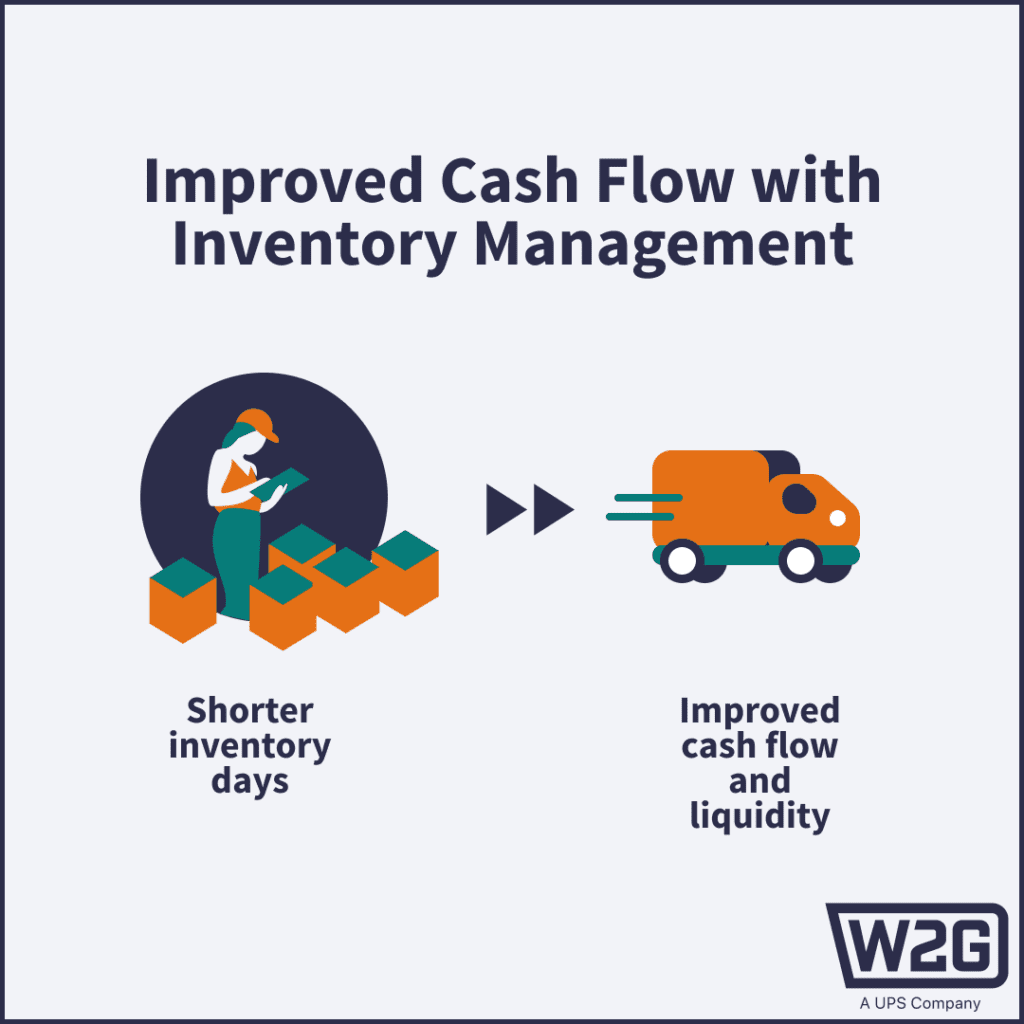What Is Inventory Days on Hand?
Did you know that reducing supply chain costs from 9% to 4% can double profits? The days in inventory formula make it easier for businesses to manage inventory levels, preventing cash flow issues by optimizing inventory carry costs.
Find out how to win customers for life with our eBook.
Too much inventory ties up capital and increases storage and carrying costs.
On the other hand, stockouts can lead to dissatisfied customers and missed sales opportunities. So, how do you get the right stock balance to keep your profits and customers happy?
That’s where the ‘days in inventory formula’ comes in. By measuring how quickly your inventory sells, you can optimize your stock levels and staffing more effectively. Tracking your inventory days on hand allows you to maintain the right balance of stock.
Keep reading to determine how your business can calculate inventory for more streamlined operations.
What Are Days of Inventory on Hand?
Days of inventory on hand measures how many days a business takes to sell its inventory stock. Financial analysts and investors use it to determine how efficiently a business manages costs.
Merchants also use inventory days on hand to make short-term projections and set reorder points to keep inventory flowing smoothly through the procurement and sales process.
Since inventory is typically a merchant’s biggest investment, customer acquisition costs (CAC) have increased by 60%, according to McKinsey. Therefore, many merchants are looking for strategies to decrease time to revenue and improve cash flow in an uncertain economic environment.
Days in Inventory Formula
There are 2 main ways to calculate inventory days on hand. Both methods will return the same answer, so choose the most convenient.
To calculate inventory days on hand, use this formula:
Average inventory / (Cost of Goods Sold (COGS) / days in the accounting period)

You can find the average inventory by adding the beginning and ending inventory (found on your balance sheet) and dividing by 2. We’ll assume you’ve calculated your cost of goods sold (COGS), but you can read our full COGS and contribution margin analysis here.
For example, your accounting period is a full calendar year (365 days). If your average inventory is $50,000, and your COGS over the last 365 days was $250,000, your days in inventory formula would look like this:
50,000 / (250,000 / 365) = ~ 73 days of inventory on hand
Alternatively, you can use another method called inventory turnover, which requires calculating your inventory turnover ratio. Inventory turnover is the number of times you sell through your inventory on hand within a given period, and it is helpful to understand your sales velocity.
The relationship between inventory turnover and inventory days on hand is inverse, meaning if your inventory turnover ratio is high, your inventory days on hand will be low, and vice versa.
The inventory turnover formula for calculating inventory days on hand looks like this:
Days in accounting period / Inventory turnover ratio = Inventory days on hand
Returning to the example above, if you sold through your inventory 5 times in the past year, you would just divide 365 by 5.
365 / 5 = 73 inventory days on hand

The days in inventory formula results are the same for each method. Simply choose the most convenient method based on the variables available from your ledger.
Why You Should Shorten Days of Inventory on Hand
Your days of inventory on hand may fluctuate depending on the season. For example, if you’re stocking up for the holidays or a big promotion, your days on hand will be inflated. However, a general rule of thumb is that the lower your inventory days on hand, the more efficient your cash flow is and, therefore, the more efficient your business.
There are a few clear benefits to lowering your inventory days on hand, including:
Having More Capital to Invest Back into the Business
Inventory is typically a merchant’s greatest investment and can tie up a great deal of capital.
The Ability to Respond Quickly to Consumer Demand
Having more capital on hand allows you to invest in new product lines and capitalize on hot trends before your competitors.
Decreased Risk of Obsolescence
Obsolete inventory, which can no longer be sold due to lack of demand or relevance in the market, can significantly drain resources. Carrying excess inventory always increases the chance of obsolescence.
Decrease Inventory Carry Costs
Storage, transport, and inventory tax can add up, especially when inventory needs to be stored long-term.
Free up Resources
Shortening inventory days frees up working capital that can be used in other business areas, such as marketing or research. That’s why using the days in inventory formula is vital to see how you can optimize your business better.
Reduce Holding Costs
Every day that inventory sits idle in your warehouse, it incurs costs. These costs include insurance premiums and expenses such as rent, maintenance, and utilities.
When you shorten days of inventory on hand, you directly reduce the average time inventory spends in storage, reducing these holding costs. This reduction in inventory holding time increases profitability and improves cash flow by minimizing ongoing expenses.
Plus, reduced holding costs lead to a leaner and more efficient supply chain, as you don’t need to deal with excess inventory that requires constant management and upkeep.
Balancing Customer Satisfaction with Cost Efficiency
Good inventory management means keeping just the right amount of stock — enough to meet customer needs but not so much that it ties up your money. This approach keeps customers happy and reduces storage and insurance costs.
Overall, having less inventory can also mean lower taxes since some taxes depend on how much stock you have at certain times, like the end of the year. This strategy helps free up money and resources for other important parts of your business.

How to Avoid Slow-Moving Inventory
It can be tempting to order as much inventory as possible to take advantage of supplier discounts and reduce unit costs. But look beyond bulk supplier discounts and consider the cost of storing that inventory and the risk of inventory obsolescence and dead stock. This helps you balance getting the greatest supplier discount without negatively affecting your inventory turnover ratio.
If the days in inventory formula calculates that you need to reduce your days of inventory on hand, implement some of the following tactics to get inventory moving more efficiently:
- Partner with a fulfillment provider that can use your sales history to forecast demand and make recommendations for order times and quantities.
- Distribute inventory to improve your delivery speed.
- Kit items together. A slow-moving item may be an accessory or a complimentary item to a high-velocity one. Make suggestions for consumers at checkout or offer the items as a kit.
- Adopt lean inventory principles, such as Just in Time (JIT) inventory. JIT aims to maintain inventory levels at the bare minimum required to meet customer demand. By arranging inventory replenishment with production schedules, you avoid overstocking goods that might take a long time to sell. With this lean principle, inventory is ordered and received when needed, reducing the likelihood of accumulating excess inventory that could become slow-moving.
Ware2Go’s supply chain expert, Matthew Reid, offers some in-depth insights on supply chain planning to avoid slow-moving inventory in the video below.
Balancing Risk
However, risks are associated with decreasing your entire inventory days on hand, so it’s important to determine your business’s risk tolerance. Not carrying enough inventory can lead to stockouts, lost sales, and ultimately lost customers. For example, if a shopper lands on your site for the first time and is greeted with an out-of-stock notification, they’ll likely find what they’re looking for elsewhere.
To avoid issues like these, it is important to monitor inventory levels and turn off marketing campaigns and promotions when inventory is low.
Ultimately, you have to weigh the risk of missed sales opportunities against the increased profit potential to make the best decision for your business.
What Are Good Days in Inventory?
Typically, having fewer days in inventory is better, as it signifies that inventory is selling faster. This usually indicates several benefits for the business, such as improved cash flow, more profitability, and reduced holding costs. Generally, longer inventory days mean less available cash.
The optimal number of days in inventory can change depending on factors like industry norms, business mode, and market conditions. However, some guidelines help you determine what makes up ‘good’ days in inventory once you’ve used the days in the inventory formula.
First, consider the industry standards and benchmarks. Different industries have varying inventory turnover rates based on product lifespan, seasonality, and demand variability. Compare your days in inventory to the industry average to determine how well you manage your entire inventory.
Second, it’s important to align your business objectives with your days in inventory. For example, a business prioritizing customized or premium products might accept higher inventory days to maintain adequate inventory levels and meet customer demand. If your company focuses on high-volume sales, lower days in inventory are better for quick inventory turnover.
The balance between inventory levels and customer demand is essential and will be the deciding factor for your company when finding your good days in inventory.
It’s important to monitor and analyze inventory performance continuously. This will help you reign in any efficiencies and shorten inventory days.

Symptoms of excess stock include requiring more storage space despite not shifting inventory. Alternatively, having insufficient stock can include not having enough products to satisfy customers’ orders. Ideally, you want to have enough stock for 30–60 days’ worth of inventory.
The Importance of Days in Inventory Formula
Days in inventory calculations are key for profitability and efficiency. Knowing this means you can better respond to consumer and market demands at a much faster rate. It’ll also help you reduce days of inventory on hand where necessary and opt for strategies to prevent slow-moving inventory, which can strain your business financially.
The ‘ideal inventory days’ formula varies from business to business, but shorter cycles are preferable, as they indicate faster sales and improved liquidity.
Monitoring and regularly reviewing days in inventory enables you to track performance over time and identify areas for improvement. By implementing feedback loops and refining inventory management approaches, you can adapt to changing market conditions.
FAQs
Discover how the days in inventory formula help manage stock, improve cash flow, and satisfy customers. This FAQ explains what it is, how to calculate it, and why it’s important for your business.
What’s the Difference Between Inventory Turnover and Days in Inventory?
Inventory turnover measures how often items are sold and replaced during a specific period, whereas days in inventory measure the number of days it takes to sell inventory.
To find inventory turnover divide the cost of goods sold (COGS) by the average inventory value.
To find the days in inventory, divide the number of days in the period by the inventory turnover ratio.
Why Would Inventory Days Decrease?
Inventory days can decrease due to several factors, including increased sales, seasonal trends, and faster fulfillment.
It’s important to differentiate between low inventory turnover levels and shorter days in inventory, because low turnover can indicate that items aren’t selling fast enough.
How Ware2Go Can Help
Ware2Go is a UPS-backed fulfillment partner that helps merchants of all sizes establish a fulfillment network that supports affordable 1–2-day shipping.
Our integrated inventory management system automatically alerts users when inventory is low, providing estimated days on hand and suggested reorder points. With a 99.5% inventory cycle count accuracy, our industry-leading SLAs ensure merchants can make informed procurement decisions confidently.
Looking for a fulfillment partner to help you optimize your inventory? Reach out to one of our fulfillment specialists today.




